Hunting is incomplete until you are not getting the right equipment. Regarding equipment, the shopping process is incomplete until you are not investing in the perfect hunting ammo. However, the choosing process is not as simple as it seems. The process can be full of hassles and prove tedious after one point.
All of this enhances to another degree if you are a novice in the hunting field. But one thing that remains stagnant for all kinds of hunters is using qualitative equipment. You can check this site for hunting ammo that serves your need.
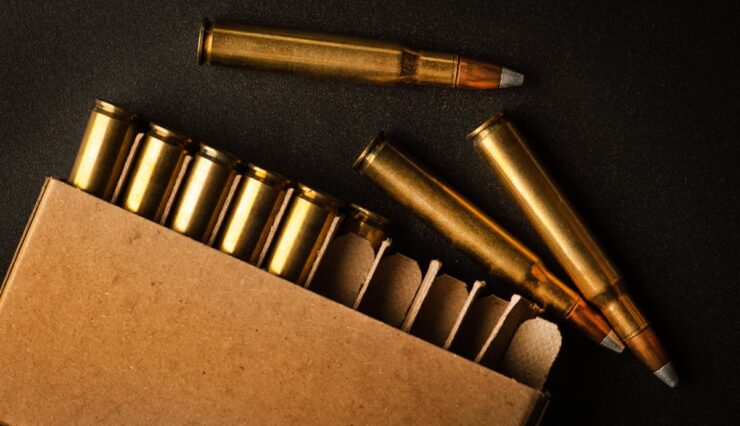
Source: pinterest.com
All new and experienced hunters must consider three factors when choosing ammo, especially when hunting any particular animal.
So, you might have guessed the first consideration by now.
If not, try and relate to hunting the kind of animal that you wish to hunt. The most important factor is that you should decide whether you want to hunt the animal humanely or not. So, if you don't want to hunt the animal humanely and want to use the equipment only, your choice should be specific. If you buy ammo that cannot do it reliably, it is better not to waste your money on it.
Another thing that you should consider is the kind of ammo you want and whether it is animal-specific or not. If it helps kill a Brontosaurus, it does not mean it will viably help in hunting. The simple fact that you need to understand is that your responsibility while animal hunting is to harvest it quickly and without causing much pain to it. So, it would help if you went for round selection whenever possible.
The last consideration that you should cater to is whether the equipment will damage the meat of game animals. There is no point in hunting them down otherwise.
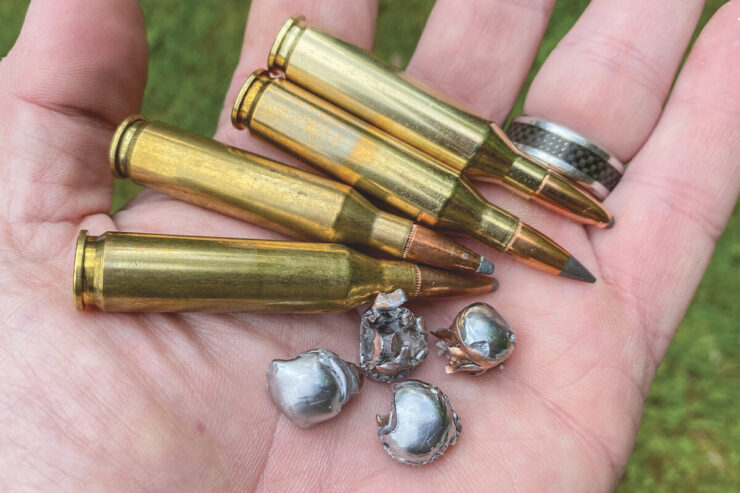
Source: youtube.com
The hunting game largely depends on the equipment you use and the ammunition you are investing in. It should be worthy and qualitative. Hence, here are some tips that you can follow:
The first thing you should consider is the kind of game, hunt, or animal you want to go for while hunting. First, you need to get clarity on the kind of animals for hunting and whether they fall in which category.
The small game animals are squirrels, raccoons, mink, foxes, rabbits, and others like badgers and opossums. The weight of these animals ranges between 2 to 15 pounds. The typical range for shooting is within 100 yards.
Also, it would help if you took additional measures for a qualitative hunt. For example, avoid excessive meat and other things like pelt damage. For these things, the best gig is to pick a small-caliber cartridge with low power. They are the best for small-game hunting.
The medium game involves hunting other animals like antelope, feral hogs, impala, and some small African antelope. The weight of these animals is from 50 to 350 pounds. Also, the range can be more than 50 yards but less than 300 yards. They are a popular quarry for modern hunters. Hence, a centerfire rifle cartridge of 6mm or a greater loaded option with an expanding soft-point or hollow points bullets can help.
But, if you want to go for a large and heavy game, thin-skinned animals are preferred, and killing them requires more than a single shot. It includes kudu, crocodile, black bear, musk ox, and eland and zebra. They include large-caliber bullets that weigh a minimum of 180 grains. These should be fired from magnum or standard calibers.
Hunting ammunition includes rimfire cartridges. But, the cost of the product or equipment in the market differs for each product. Hence, you have to see the cost and budget you are ready to spend to acquire these things. If you want less investment or expenditure in the rimfire cartridges, you can choose between .17 Mach 2, .17 HMR, .22 LR, and others like .22WMR.
If you choose these calibers, they are the best for short-range applications. The maximum distance should be 100 yards. Cartridges with hollow-point or soft-point bullets are the best picks in other situations like centerfires. They provide a different range that benefits the shooting process and ensures striking energy. All this is available at a moderate cost.
Hunting in the wild is prone to many factors. Hunters can be aware of some factors, while there can be uncertain ones. They include unfavorable conditions in the wind. Hence, you should invest in ammunition that does not rust easily and hinders the hunting spree.
The brass-cased bullets are available as covered in nickel and help provide maximum protection from corrosion. Hence, you should ensure the bullet case material is correct and reliable. They are worth a try, for sure.
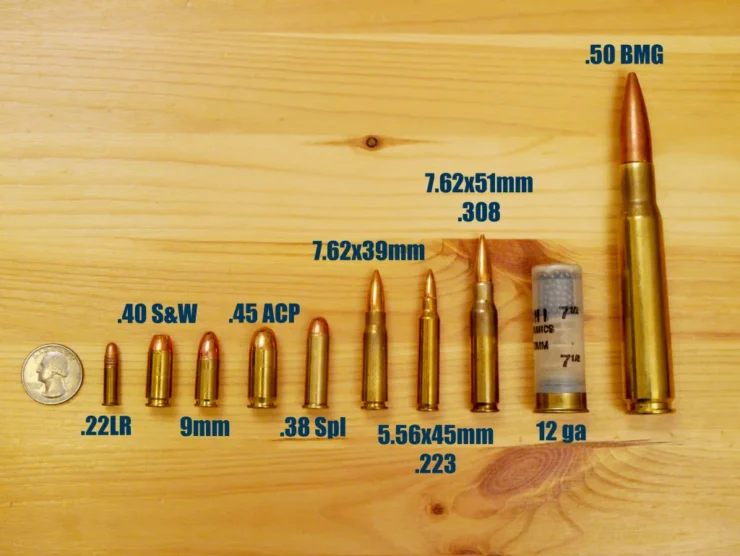
Source: youtube.com
The basics of ammunition dimensions are a major requirement; you should not miss out on that. It is an essential requirement for hunters who are new in the game and also the ones that have been doing it for a long. But, there is one thing you should ensure: the imperial and metric systems tend to name the same size of the cartridge with different names.
Let's take an example to understand it.
If you want a 7.62-millimeter bullet, its measurements will differ in the metric and imperial systems. Hence, to avoid confusion, you should know the basic differences and minor naming variances before settling for any particular one for your hunting purpose.
These are major factors that you should consider before buying hunting ammo. They may influence the various kinds of ammo differently, so you should consider them in all possibilities. It is essential to get your hands on the perfect combination of ammo and firearms so that they don't hamper your pocket and also, are well-maintained.
When it comes to choosing the right type of firearm, ammunition that you hunt, shoot with or even concealed carry, and the weight of the round you shoot, it can be a difficult process.
Taking the time to do your homework can pay big dividends when it comes to making the most out of your investment in time and equipment.
| .22 Long Rifle (LR) | 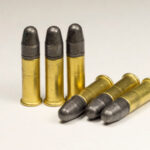 |
|
| .22 Winchester Magnum Rimfire | 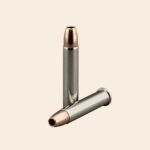 |
A great example of this would be when comparing the.22 Long Rifle (LR) and the.22 Winchester Magnum Rimfire (WMR).
These two rounds can easily be confused with each other due to the .22 label before the identifier, however, each has its own place in the world of shooting and marksmanship.
Underestimating either is doing a great disservice to the round itself and your own enjoyment shooting it.
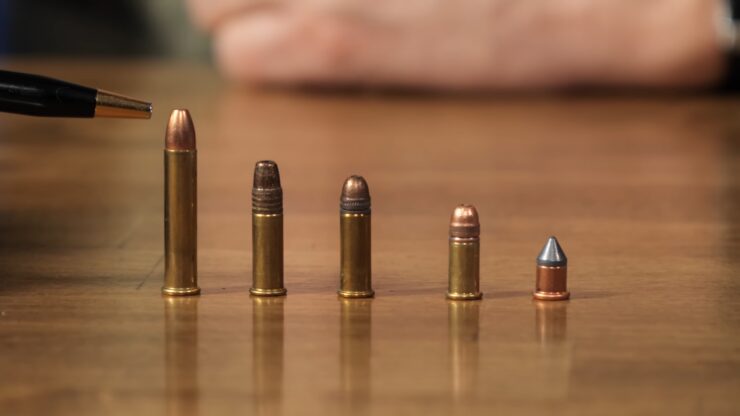
Source: youtube.com
The .22 caliber, or 5.6mm, a round of ammunition has been around for over a century, owing its roots to the Bullet Breech Cap of 1845 in France, but introduced by the J. Stevens Arms and Tool Company in its more common form in 1887.
While it is often seen as an all-purpose plinking, target shooting, and short-range small game type of round today, it was the predecessor of many different larger rimfire calibers that have come out since its inception.
While calibers have come and gone, the versatility of the .22 has kept it a relevant and ready round found on many gun ranges across the United States. Today there are many different variations of the.22 available for consumer purchase.
From short, shot, to extended range, these rounds come in various grains and configurations that we will discuss a little further on to suit the needs of the person shooting it and the performance that they are trying to achieve. As varied and versatile the round is the firearms that make use of them are no different.
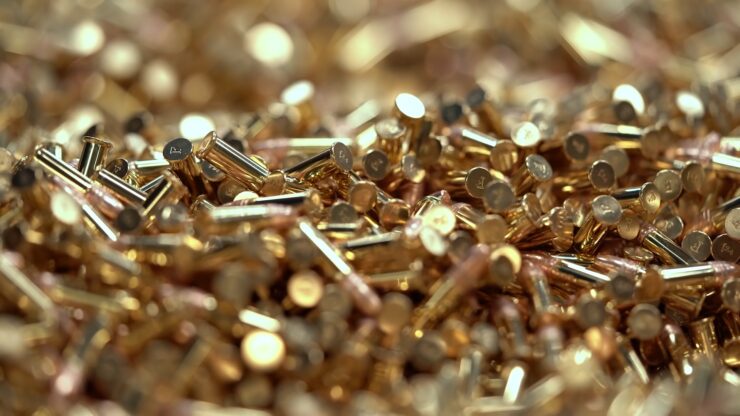
Source: youtube.com
For many people, hearing the name .22LR means a round that is predominantly for plinking or used in the taking of small animals. However, there are other benefits to using the .22LR for target plinking that can't be found in different calibers.
Firstly, this type of ammo, in many of its forms, is highly affordable and easy to find. On average, a .22LR round will cost you somewhere in the area of $0.046/rd from most online ammunition sellers. The .22 WMR round, by comparison, will run you somewhere in the neighborhood of $0.16 per round. Shopping for sales and looking for great prices on this ammo can result in hours of enjoyment.
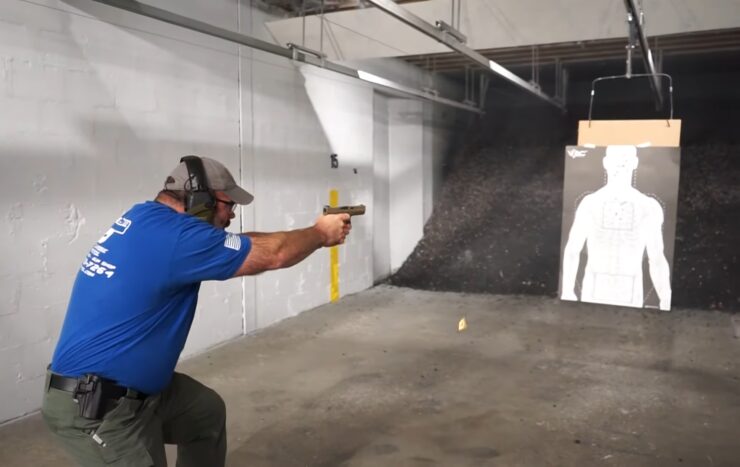
Source: youtube.com
Using .22 ammo for target practice ammo is probably its most commonly used application. While there has been an upswing in 5.56mm, the .22 remains firmly in control due to its inexpensive cost, quiet report, and lack of recoil from the rifle or pistol that it is fired in. For these simple reasons, it serves as a great way to teach those individuals that do not have much experience with firearms. So, if you have a friend, a son, a daughter, or a significant other that is interested in learning how to shoot, this is the round that you are looking for.
For those with more experience and capability, many communities across the country offer marksmanship leagues that use this versatile round to compete against each other or simply to have fun shooting in a community format. If it sounds like something that you might be interested in, simply do a search for your local shooting ranges and call for more details.
When it comes to hunting with the.22LR, there are many variables that come into play. Each state has its own guidelines on a specific caliber, grain, bullet length, and other factors that determine whether a round is legal to hunt a particular species.
While the .22LR can penetrate and dispatch most of your common smaller animals, it is not legal in most states to hunt larger animals with. This is largely due to the light size of the round and the difficulty that comes to lethally penetrating a larger game animal due to thick hides and skulls.
22 LR is great for hunting small animals and pests but it's not good for larger animals because it doesn't have enough stopping power. Photo by Dan Gold on Unsplash
While it is capable of killing these same animals in many situations, ethics of taking a questionable shot or round come into play. That is, not to say that in a survival situation it would not be effective, the legalities of hunting with it do not allow for its use as such.
In all states, centerfire cartridges or shotguns capable of shooting legal sized slugs or buckshot are required to hunt for game such as deer, bear, and wild hogs. This is due to the round being primarily effective at a range up to about 50-75 yards. After this distance, the trajectory of the round drops significantly as the distance is increased. No, the round is better left for smaller quarry such as squirrels, prairie dogs, rabbits, in some states turkey, and other small game where it excels against competing rounds.
The 5.6x27mmR 40 grain .22 Winchester Magnum Rimfire or the WMR for short was first introduced in 1959 as the .22 Mag. and was put into production in 1960 by the Winchester Repeating Arms Company. Shortly after its introduction, Smith & Wesson, Ruger, and others were building firearms capable of using the round. Platforms that were made to fire the round include pumps, bolt-actions, single-shot, semi-automatic, and lever-action rifles.
When it was first introduced, this was the round that you needed if you were looking for anything that could hit a target at around 125-yards. This round was challenging to manufacture due to the tremendous pressure that resulted from its being shot. It might be a small round, but its increased power allowed for more versatility and capability when hunting. At that time it significantly changed the landscape of firearms for both food procurement and protection of your family.
With being a substantial increase in case size than the .22 Long Rifle (25.4mm), the .22 Mag (34.3mm) was able to produce greater stopping power through increased velocity and energy upon impact. These attributes allowed it to reach significantly higher chamber pressures to the tune of 24,000 PSI.
In terms of diameter, the diameter of the average WMR was around .224 inches or 5.7mm; this is, in fact, the same dimensions of the modern .22 centerfire Hornet round. As these new ballistically similar bullets have come out en mass via the .224, many shooters have once again become excited and energized about once again shooting the .22 caliber round. With so many choices and variants, the .22 has found ways to remain relevant due to its versatility and affordability for the casual shooter.
The first rendition of the rounds had some exciting results. When shot from the rifle, the shell could reach an astounding 2,000 fps in velocity when shot from a rifle and 1,550 fps from the barrel of a pistol. These bullets were 40-grain hollow points and were cased in a thin full-metal jacket.
After many generations of perfecting the round. The shell could reach 1,910 fps and 1,480 respectively. The amount of energy that was projected was around 360 foot-pounds. This was almost twice as much power and momentum of the 40-grain .22 LR cartridge.
At this point, the small little magnum was not so tiny after all and packed quite the punch.
Beyond the low cost of shooting a .22, one of the most significant features is the versatility of the round. The .22 is available in many different grains with significantly different capabilities. A breakdown below from Federal Cartridge from their 2007 Interactive Ballistic catalog identifies a few of the variations of the round and the effect on weight versus velocity and energy of the round in the .22LR platform.
| Bullet mass/type | Velocity | Energy |
|---|---|---|
| 40 gr. (2.6 g) Solid[2] | 1,200 ft/s (370 m/s) | 104 ft·lbf (141 J) |
| 38 gr. (2.5 g) Copper-plated HP[2] | 1,260 ft/s (380 m/s) | 134 ft·lbf (182 J) |
| 32 gr. (2.1 g) Copper-plated HP[2] | 1,430 ft/s (440 m/s) | 141 ft·lbf (191 J) |
| 31 gr. (2.0 g) Copper-plated RN[3] | 1,750 ft/s (530 m/s) | 204 ft·lbf (277 J) |
| 30 gr. (1.9 g) Copper-plated HP[3] | 1,640 ft/s (500 m/s) | 191 ft·lbf (259 J) |
As you can see, the effect that the weight of the round has largely affects the velocity that it is fired at. A heavier round results in lower speed and lower energy, thus a reduced range for the .22LR
The .22WMR round itself is subject to the same variations that affect its performance and capabilities as the .22LR. The chart below from Cartridges of the World gives a good breakdown of the effects that weight, velocity, and energy all have on each other.
| Bullet mass/type | Velocity | Energy |
|---|---|---|
| 30 gr. (1.9 g) HP | 2,300 ft/s (700 m/s) | 322 ft·lbf (437 J) |
| 40 gr. (2.6 g) JHP | 1,875 ft/s (572 m/s) | 324 ft·lbf (439 J) |
| 50 gr. (3.2 g) JHP | 1,530 ft/s (470 m/s) | 300 ft·lbf (410 J) |
As you can see, the .22WMR generally has a larger weight and considerably more velocity pushing the bullet portion of the round along its trajectory. While ballistically similar to the LR round, the WMR has an increased range and energy at the point of impact compared to its counterpart. While unimportant in controlled distance plinking and target shooting applications, this becomes increasingly important when used in a hunting capacity.
Additionally, it is important to remember that these numbers do not take into consideration the effect that weather and air conditions such as wind have on the bullets as they travel in space.
Due to the short range that these bullets are fired, long-range considerations such as humidity and air density have on their flight path is minimal. However, due to the generally light weight of the rounds, wind can have a considerable effect on their trajectory.
At the very limits of their usable range, the decrease in velocity and increased wobble may wreak havoc on consistent patterning on windy days. In this matter, the .22WMR and its larger grain size and increased powder loan are likely to experience less of the effects of weather than its .22LR counterparts.
On windy days, long distance shooting with a caliber of this size may result in using “Kentucky Windage” to effectively hit targets. This means that the shooter must identify the impact of the round in relation to the desired point of impact. Once this is determined, the shooter then holds his or her aimpoint to the appropriate distance opposite of the target and pulls the trigger. This adjustment should allow the round to hit the target as desired as long as there are no considerable shifts in wind direction or velocity during that time.
The following chart gives you a great idea of what to expect when it comes to the drift of your bullet when faced with a ten mph wind at a 90-degree angle for a couple of different rounds. After all, drift is an important consideration when it comes to hitting what you are shooting at. This factor is more likely to affect hunters as they are the ones that are typically taking shots at the range in the environment.
As you can see, at ranges beyond 30 yards, drift becomes significant, even at a wind speed as low as ten mph. At distances beyond 90 yards, a drift of 5 inches makes for a significant adjustment when you are shooting at a bullseye on a target that may only be a couple of inches across. Over adjusting with your scope when faced with conditions like these make for a firearm that will not be reliable the next time that you are out shooting under other circumstances.
When it comes to hitting what you are aiming at, it is essential to understand the expected trajectory of the round that you are shooting. While there are a number of variables that come into play when it ultimately comes down to the path of the bullet, an expected trajectory can be mapped based off of energy and range.
The primary use of the .22 caliber round has varied little throughout its lifespan. From its use as a common hunting and self-defense round shortly after its manufacture, to a more target and plinking based round in modern times, the .22 in all of its variations as etched a place in history.
During the 1960's it was not uncommon to have a hunter serve in lieu of a federal game warden in those times where an unwanted wildlife pest such as a skunk or raccoon took up residency on someone's property. On many accounts, these individuals were called upon by local farmers and homeowners and were asked to remove everything from hawks, English sparrows, crows, and other pests.
Typically, the firearm of choice was some sort of .22 caliber rifle, but for many, the choices were the WMR variant. When called upon, these pest control people would do there best to protect wildlife when possible and keep residents safe and sound and free of unwanted pests.
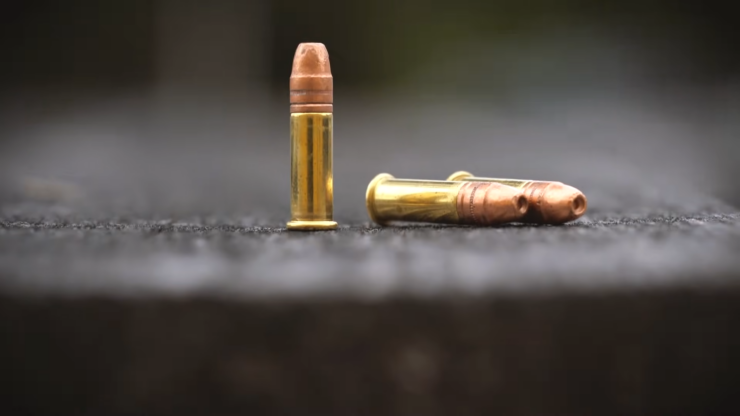
Source: youtube.com
Just like everything else in history, when a product is designed and produced and found to be effective, improvements, and adaptations are sure to follow. In the case of the .22LR that improvement was the .22WMR.
When it was initially developed and for some time afterward, the .22 WMR had a formidable reputation. This is largely in part because it was common knowledge that any rifle that could safely and effectively fire this round packed a considerable punch and was very powerful. Once it was found to be safe, effective, and efficient, the improvements followed its newfound popularity. Manufacturers such as Smith & Wesson, Ruger and Savage started creating auto-loading rifles and pistols designed to fire the round and its 24mm length.
Due to its high pressure (24,000 PSI) inside of the case of the round a possible issue resulted when compared to the original inertia-driven actions. The autoloading platform for the .22 WMR involved much trial and error before a repetitively successful model was produced. However, in the 1990's, manufacturers have successfully replicated and improved such technology, and as a result, all avid shooters were eager to try century-old technology that had been modernized. After the technology had been built for the .22 WMR, Remington came out the with Model 597 to make use of the improved round.
The versatility and the variety of platforms that can fire the round make these improvements useful to owners of all firearms types as technology continues to improve, and significant improvements are made by firearms manufacturers. Whether you own a revolver or have been thinking about purchasing one, Taurus, Ruger, Smith & Wesson, and many more manufacturers have made rimfire capable platforms available in their revolver and semi-automatic pistol lines.
A few of the more popular modern pistols making use of the .22LR caliber rimfire cartridges are listed below:
While the advantages of the .22 WMR load are evident, variations exist that make this already versatile load even more exciting. Doing a little research and talking to your local firearms dealer may reveal a wealth of information that would be otherwise missed by the majority of casual shooters.
Other variants of this round include but are not limited to, the 22TCM, 22BB, 22 Extra Long, 22 Accelerator, 22 Winchester Automatic, and others.
High-velocity: These rounds travel at speeds of 1200–1310 fps-Use standard 36 or 40-grain bullets and smokeless powder.
Understanding what makes a rifle is important when it comes to knowing the fundamentals of accurate and predictive fire. In terms of the .22, a series of rifling grooves cut into the interior of the barrel make the round more accurate by spinning the bullet as it travels through the barrel. Variations occur from manufacturer to manufacturer, but two common twist rates are 1-20 and 1-16. This means that for every 20 or 16 inches, a bullet will make one revolution as it travels down the barrel.
The twist is largely based off of the type of round that the firearm was made to shoot and the length of the barrel. In firearms that have been “shot out” or the grooves have been worn down to the point of being ineffective in keeping the bullet in an accurate and predictive path, barrel inserts are available to bring your old worn out firearm back to life.
Many people that build their own rifles have the capability of cutting their own rifling through the use of milling machines that are designed to cut at a specific depth and path. It is not recommended that someone that not know what he or she are doing attempt this as a mistake could result in injury and even death to the person firing the gun.
The appeal of shooting the low cost, yet effective .22LR round has lent to some pretty impressive innovations in the firearm marketplace. This is evident through the presence of kits that can be installed into various calibers of larger hunting rifles and pistols to shoot the smaller round. Replacement upper receivers exist for AR10 and AR15 platforms. Replacement barrels for 1911 series pistols for various manufacturers are readily available from a variety of sources.
These kits are immeasurably important for the shooter that wants to spend more time at the range without overspending on ammunition. Remember, the .22 round is approximately $0.046 per round as compared to the 45 ACP and its cost of around $0.38 per round.
That means that for every one round of 45 ACP that you shoot, you could be shooting about eight rounds of .22. For the person that loves to shoot a particular handgun, the conversion kit essentially pays for itself in little to no time.
These same kits not only exist for the LR round, but for the .22 WMR round as well in all platforms. So, if you have a particular preference for one or the other, there is a conversion kit out there for you. This is something that any serious marksman or woman should consider when deciding where to spend your money when it comes to ammunition and range time.
While understanding the difference between the .22LR and the WMR is important, it is even more important to understand the firearm that you are looking to shoot that round from. It's also important to find the best 22 scopes to shoot from.
That is because rifles that are designed to shoot the LR round are not capable of chambering the WMR round. Trying to do so can result in significant damage to the weapon or even possibly an accidental discharge in extreme cases.
However, it is likely that these same firearms may be capable of chambering a “short” or some other variant of the .22 caliber round. If you have questions about whether or not your firearm is compatible, ask an expert to ensure that your time spent on the range is not only enjoyable but safe.
The shared history and similarities between the .22LR and the .22 WMR make for a plethora of choices for the most discerning marksman. Whether you are looking for a round for self-defense, hunting, plinking, or target shooting, both of these rounds lend themselves nicely to whatever needs you may have.
Doing the research and spending the time at the range to better understand how all of the factors that we have discussed play into ballistic performance will ensure that you have a round that is not only safe but effective as well.
So, when you find yourself with some time on your hands and a firearm capable of firing both of these rounds, hit the range and experience the exhilaration of sending some .22 rounds down range with some friends.
Featured Img: Wikipedia